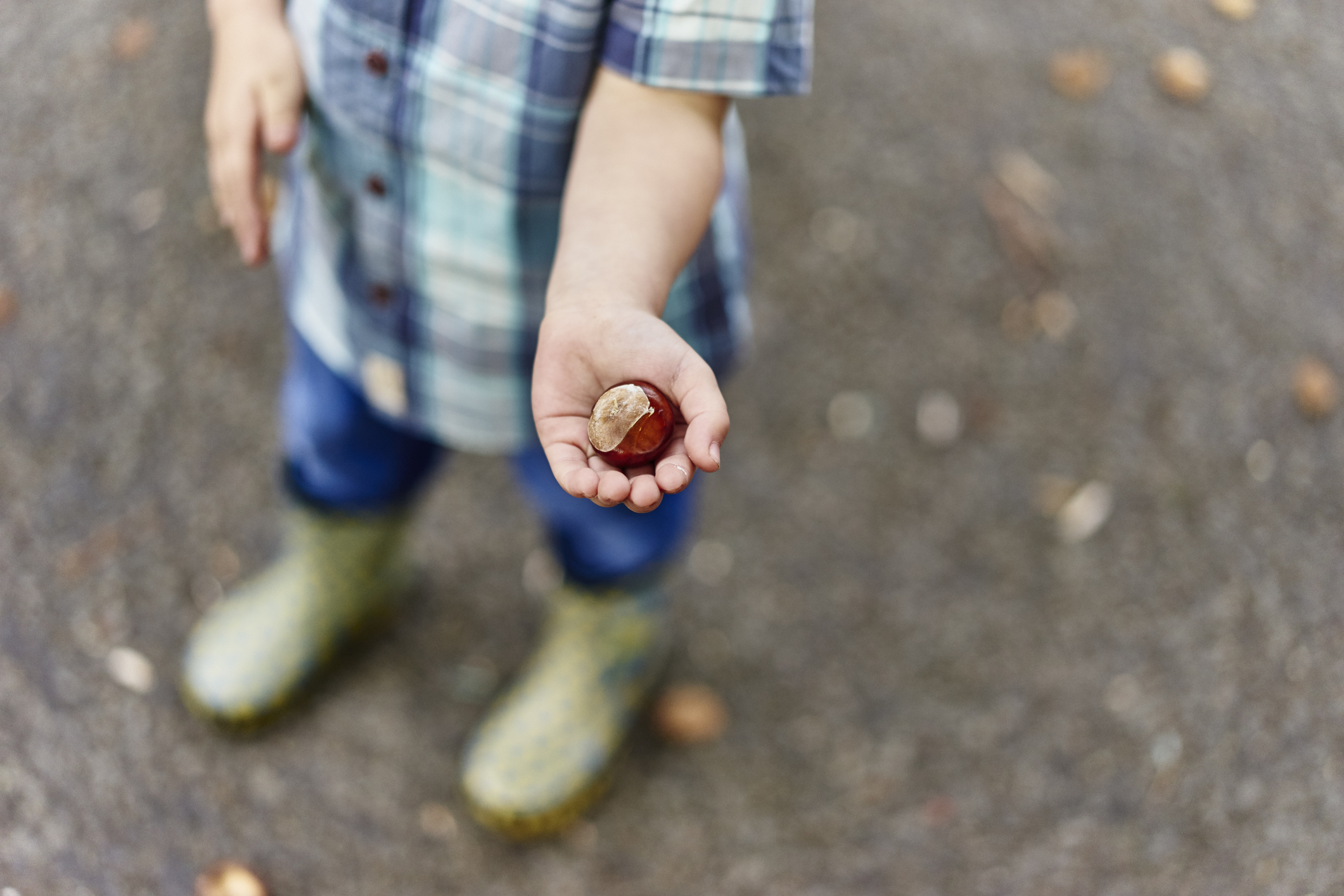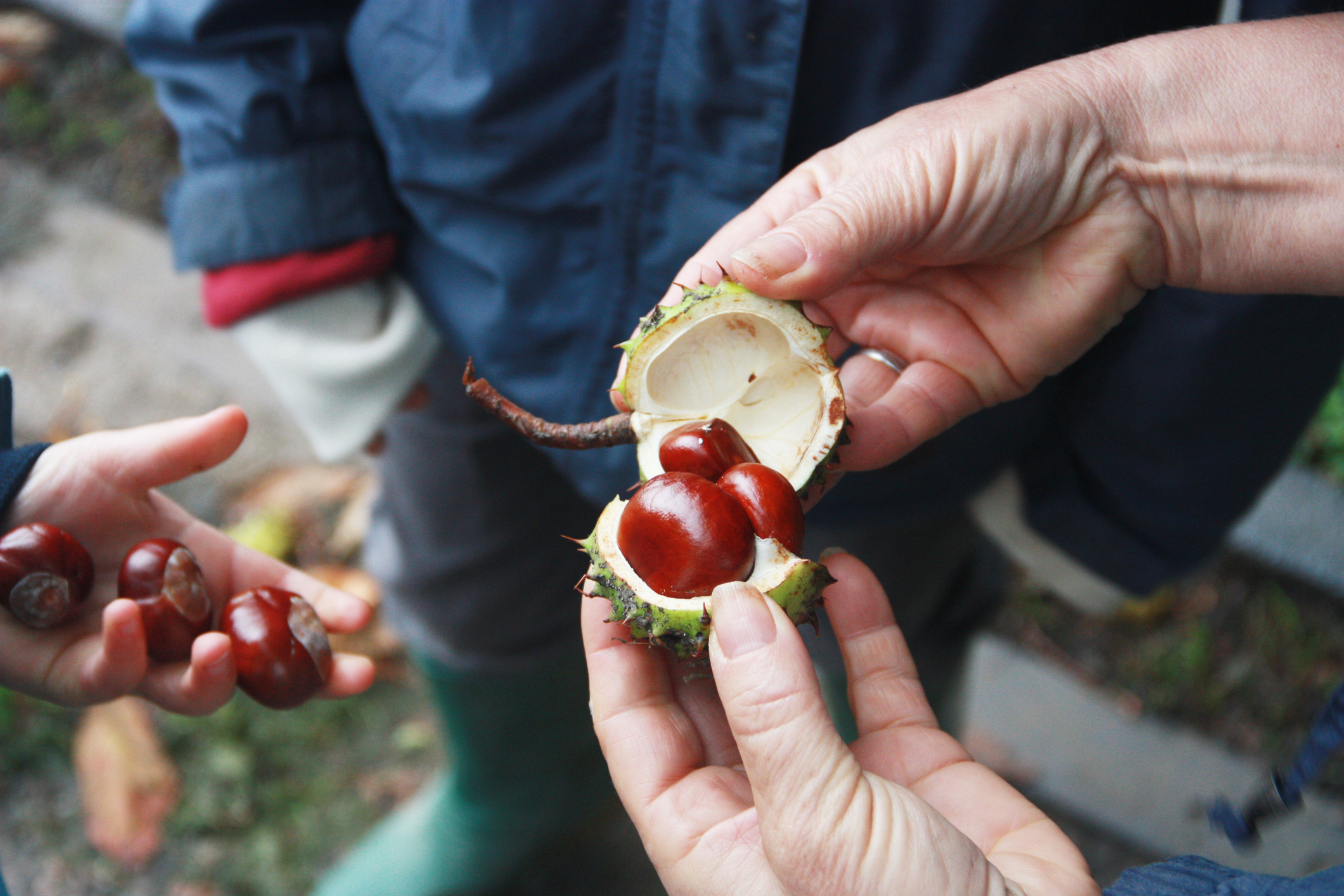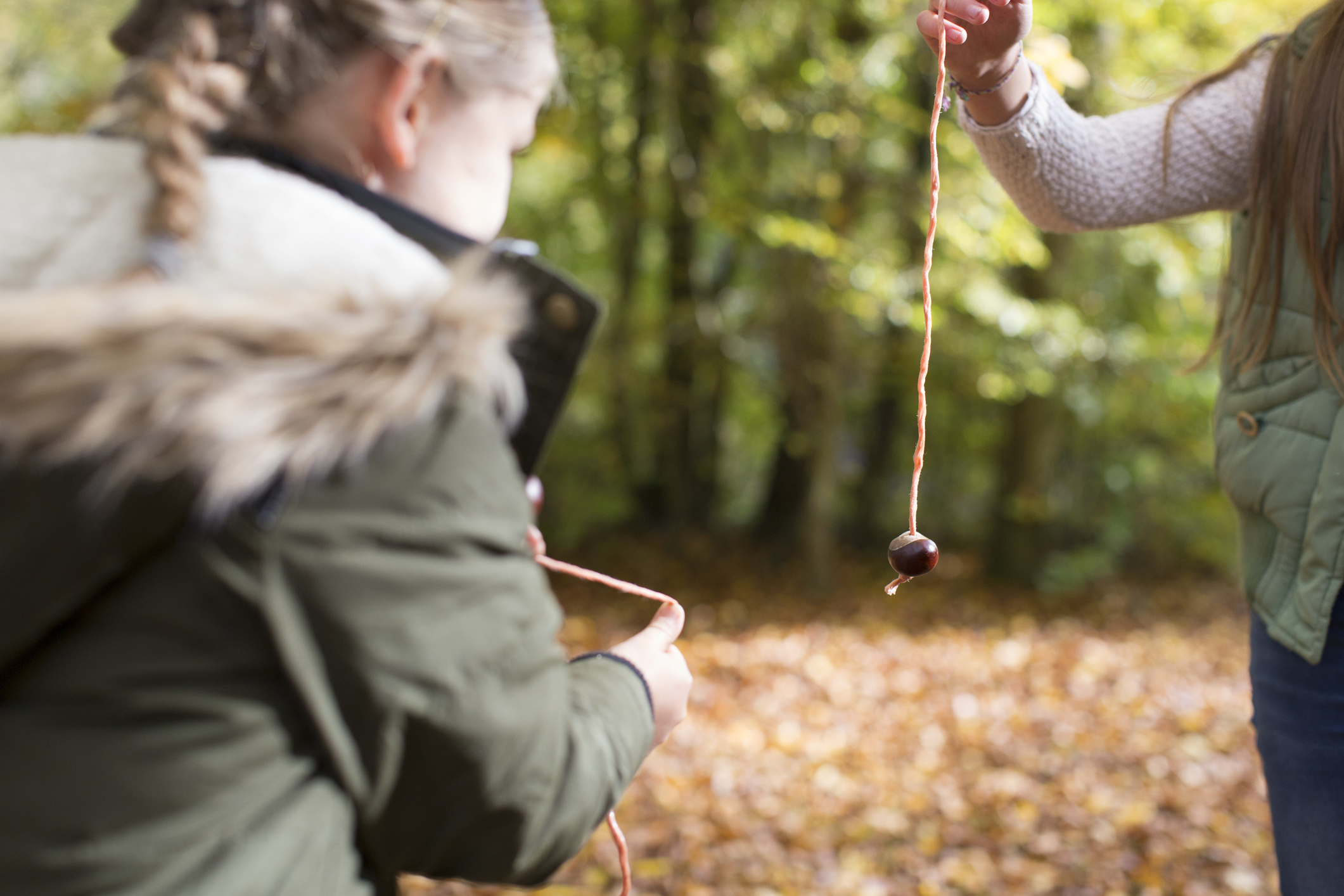When is conker season, are they poisonous and can you cook them?

Conker season is officially upon us! Along with cosy layers, golden leaves and pumpkin spiced lattes conkers are synonymous with autumn.
We are in the height of conker season - which is from Aug through to Oct. Conkers are seeds that fall from horse chestnut trees and underneath their green spiky exterior, which splits when the conker hits the ground, is a shiny smooth brown conker.
Our Family Editor Stephanie Lowe says; 'Conker season is the best time! You can entertain the kids for ages with them. First there's the finding of the conkers - get a bucket and go on a conker hunt. Then there's the cleaning of the conkers, stringing if they want to battle with them. Not to mention the crafting potential. Conker season is the (best time-consuming) gift that just keeps on giving.'
Apart from making some great childhood memories out on the playground playing with them, what else can you do with conkers and can they really keep spiders away? (or should you just get a spider catcher?)
When is conker season?
Around end of August, and lasts through September and October. However, it's worth noting that this can be affected by the climate and environmental factors. But maybe get your conker-collecting bucket out and ready for September.
When are conkers ready to pick?
Conkers are ready to pick when they are on the floor. If you pick a conker from the tree itself it won't be ready. When they have fallen from the tree this means they’ve hardened and ripened in the middle. According to The Woodland Trust a conker is ready as soon as you pick it up off the floor. If they’re left on the ground for too long, they become weaker and soggier.

Are conkers poisonous to dogs?
Yes. Conkers contain a poisonous chemical called aesculin. Though your furry loved one would need to ingest several to cause severe poisoning.
Parenting advice, hot topics, best buys and family finance tips delivered straight to your inbox.
Can you cook conkers?
No. There would be little to no point as eating a conker - while unlikely to be fatal - will make you ill. It’s understandable that many people may think that you can as conkers do resemble chestnuts – the kind that are often roasting on an open fire around Christmas time – and because conkers fall from horse chestnut trees. Alas they are two very different things.
Can conkers keep spiders away?
There's no proof this is true. Though many people swear by the old wives' tale that a few conkers in corners of their house throughout autumn to keep spiders away. The story - which seems to be passed down generations - is that conkers contain a noxious chemical that repels spiders, but this has never been scientifically proven.
What can I make with conkers?
The most well-known thing you can make with conkers is a competition! Played for decades in playgrounds across the country, to play at conkers you need to find the biggest and strongest.

Next, you create a hole through the middle of your conker, and thread in string. Then you and friends take turns swinging at one another’s conker. The first conker to crack and break is the loser.
Stephanie has been a journalist since 2008, she is a true dynamo in the world of women's lifestyle and family content. From child development and psychology to delicious recipes, interior inspiration, and fun-packed kids' activities, she covers it all with flair. Whether it's the emotional journey of matrescence, the mental juggling act of being the default parent, or breaking the cycle of parenting patterns, Stephanie knows it inside out backed by her studies in child psychology. Stephanie lives in Kent with her husband and son, Ted. Just keeping on top of school emails/fundraisers/non-uniform days/packed lunches is her second full-time job.